Of all the places we’ve been so far, it is a bit of a surprise that Novi Sad, Serbia quickly turned into one of my favorites. Added to our list after Timisoara because of its close proximity and low cost of living, we’d also heard good things about it from an acquaintance. Our apartment for the month was situated right in the center and some of the windows looked toward the steeple of The Name of Mary Church, the largest Catholic church in the city. Since the Old Town is largely made up of walking streets, we traded vehicular traffic for sidewalk restaurants and plenty of shopping in the dozens of pasažs and courtyards between the buildings.
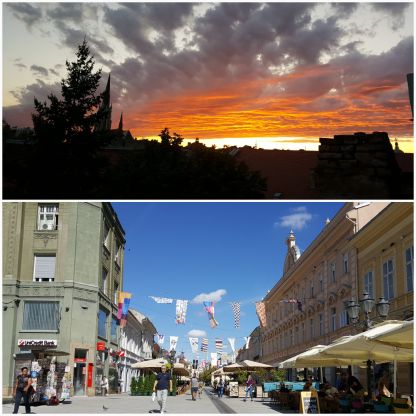
The most famous site in the city – just across the river – is Petrovaradin Fortress. Constructed to guard the narrowest point of the Danube, it now houses artists’ studios and restaurants. Towering over Novi Sad, it was a popular place to watch the sunset and for wedding photographs. The fortress building itself is massive, but the grounds expand out on three sides, encompassing the Old Town of Petrovaradin and green space mixed with battlements. In July each year, the Exit Festival takes advantage of sprawling space. Stages are set up among the earthen bulwarks and musicians play all weekend.
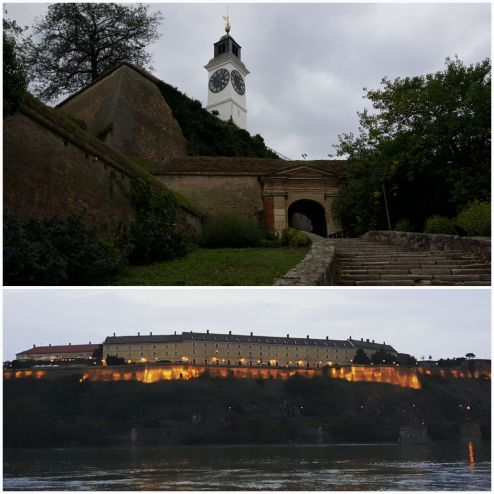
Like most European cities built near water, Novi Sad embraces the Danube. A lengthy river walk stretches out from the city center, and runs parallel to a bike path that allows riders to cycle clear from one side of the country to the other. Plenty of older men fish, families stroll with kids, and many end up at the man-made beach during summer months.
During our stay, we watched the slow-moving assembly of the new Road and Railroad Bridge. The first span had been placed shortly before we arrived, and the second span was waiting on the bank to be moved into place. In 1999 NATO bombed Novi Sad, destroying the city’s bridges, the oil refinery, chemical plants. This bridge is one of the final things to be rebuilt. For the 18 years since the bombs fell, a narrow, single lane bridge has served both directions of vehicular and rail traffic.
The city also suffered in previous conflicts. Other sculptures and plaques on the river memorialize victims of World War II. Much of the city was destroyed and rebuilt after bombing in 1849 that occurred during uprisings against the Austrian Empire. We were told by one local that “Novi Sad was a house that got built in the middle of a road. Every time someone wants to get by, we get run over.”
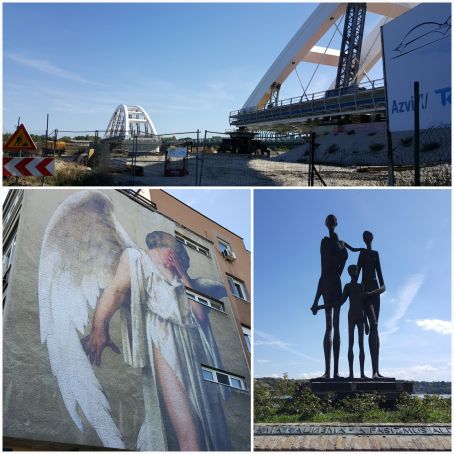
Local cuisine reflects a mixing of Balkan traditions. Many dishes center on meat, like ćevapčići, a sandwich of grilled sausages. Our apartment was in the perfect spot to grab a quick bite. Right downstairs was a corner sandwich shop serving up incredibly rich and filling meals – our favorite was beef topped with melted cheese, cream, and grilled onions. Almost next door was a burger place that served thin patties grilled up and coupled with delicious house sauces.
Burek, a pastry made with phyllo dough, looks like it should be a lighter meal, but is deceptive. It is often layered with meats and cheeses that make it just as hearty as a larger meal. But even without the filling, the dough alone was tasty.
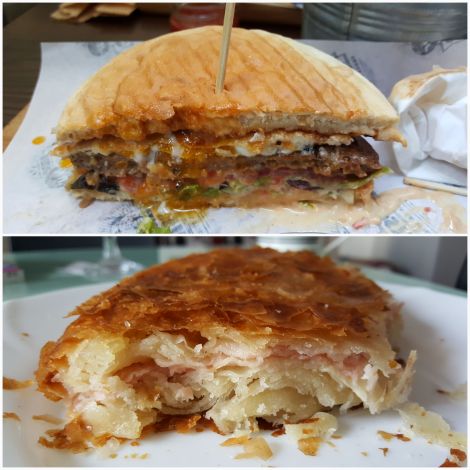
Just a few miles from Novi Sad is a region known for wine. The center of the industry is located in Sremski Karlovci. We missed the wine festival by a couple of weeks, but still headed out for a day of tasting. A unique local specialty is bermet, wine with 20 spices and herbs added to the mix. It tasted quite close to mulled wine, reminding us of Christmas. But even aside from that, the wines grown in the region are inexpensive and tasty. Most wineries have been at it for decades, as was the case at Mrdanin, where they have been vintners for five generations.
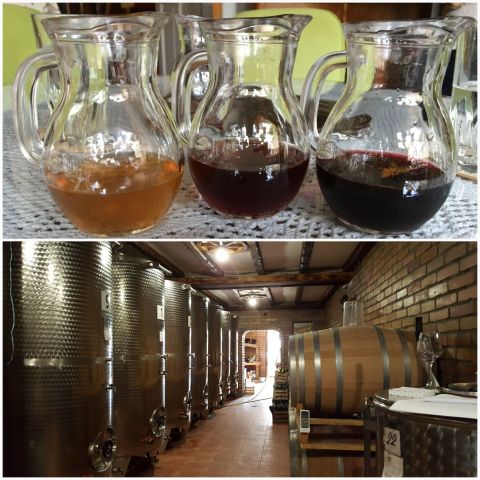
Fruska Gora, the lone mountainous ridge towering over the flat Serbian plains, provides a climate for the wine grapes as well as a perfect spot for hiking. A friend we met in Novi Sad showed us around his village, Bukovac, and the surrounding hills. Along the ridgetops were small fields and grazing meadows, and these blended into a heavily wooded national park. The wooded slopes were a welcome natural escape and provided plenty of shade to keep us cool. Harvest was well under way and corn cribs were filled for winter.
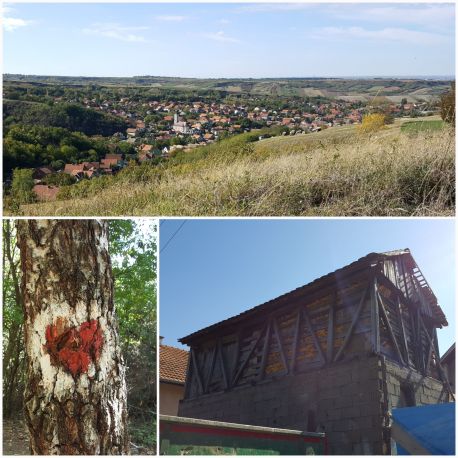
One of the things that made Novi Sad stand out so far above other places was the friendliness of the people. Even though our Serbian is abysmal, almost everyone we met was eager to talk to us. We met dozens of people at language exchanges, tech meet ups, in restaurants, at the market. We felt like we had been friends with people we just met for years. I definitely hope to return, if only to see if my initial impressions are correct and to catch up with friends, old and new.